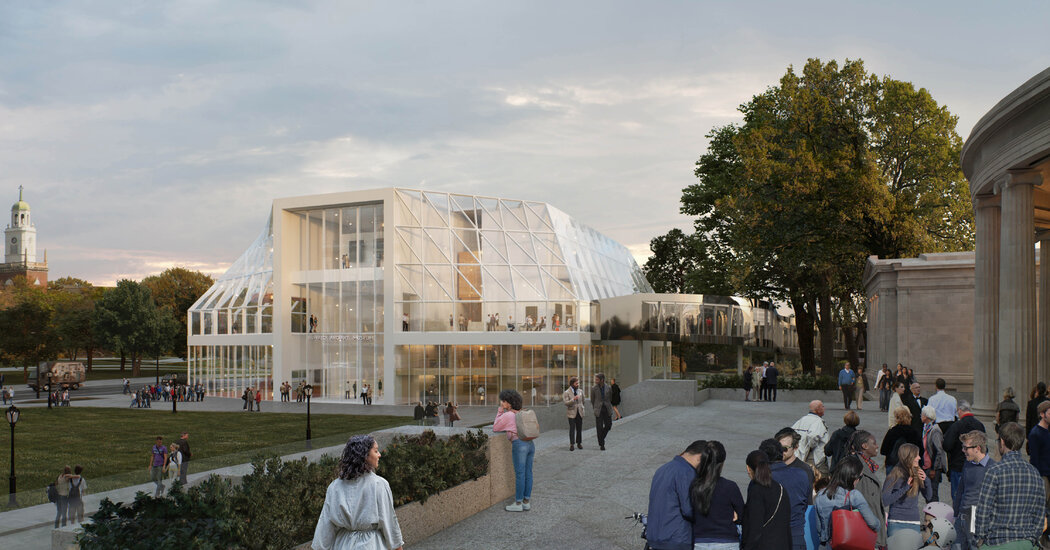
The former Albright-Knox Art Gallery, now named the Buffalo AKG Art Museum, will reopen to the public on May 25, 2023, with a vastly renovated and expanded campus designed by the OMA partner Shohei Shigematsu.
A $20 million commitment from New York State, announced Monday by Gov. Kathy Hochul, completes the Buffalo museum’s $230 million capital campaign, believed to be the largest for a cultural institution in the history of western New York. .
Throughout its history, the museum has been early to acquire works by living artists — beginning with a gift from the Hudson River School painter Albert Bierstadt in 1863, the year after it opened. It was also among the first institutions to collect artists including Jackson Pollock, Henry Moore, Frida Kahlo, Andy Warhol and Mark Bradford.
The expansion is a “transformative project that will provide a significant boost to Buffalo’s future,” said Governor Hochul, whose hometown is Buffalo. The museum has been closed since construction began in November 2019.
With this campus overhaul, the museum’s annual economic impact on the state would increase to $47 million from $24 million as annual attendance would rise to 185,000 to 205,000, from 135,000, according to the University at Buffalo Regional Institute, a research center that the museum partnered with to conduct a comprehensive two-part regional study.
The centerpiece of Shigematsu’s design is a new three-story gallery building, sheathed in a glass curtain wall. The building will be connected by a fanciful transparent bridge, snaking through a grove of oak trees, to the 1905 neo-Classical building designed by E.B. Green. Shigematsu has overseen substantial renovations to the 1905 building, as well as to a modernist building designed in 1962 by Gordon Bunshaft, who bridged the two structures with an outdoor sculpture court that was rarely used, given Buffalo’s inclement weather.
Now, the courtyard is being enclosed with a dramatic canopy of glass and mirrors rising from a funnel form, in a site-specific artwork by Olafur Eliasson and Sebastian Behmann of Studio Other Spaces that creates a new community gathering space for the campus.
“A key driver of this entire campus project has been to conceive an architectural solution that is synergistic with our mission to be an open and accessible museum to diverse audiences,” the museum’s director, Janne Siren, said.
The financier Jeffrey E. Gundlach, a Buffalo native represented by the G in the museum’s new name, gave $65 million for the expansion, with the stipulation that the campaign include both private contributions and government support. (The new gallery building is also named after Gundlach.)
Overall, the museum is doubling its exhibition space to 50,000 square feet, all dedicated to the permanent collection in an inaugural reinstallation that will display more than 400 works.
Roughly 15 percent have never been exhibited, including recent acquisitions of work by Nick Cave, Ed Clark, Simone Forti, Jeffrey Gibson, Arthur Jafa, Simone Leigh and Stanley Whitney. A highlight will be the exhibition of all 33 of the museum’s monumental paintings by the Abstract Expressionist pioneer Clyfford Still, the second largest holdings of the artist worldwide after the Clyfford Still Museum’s collection. Still personally gave 31 of these works to the Buffalo museum in 1961 after his first career retrospective there in 1959.
“Still recognized the museum as a good home for his art,” Siren said, “a home that had this artist-centric ethos.”